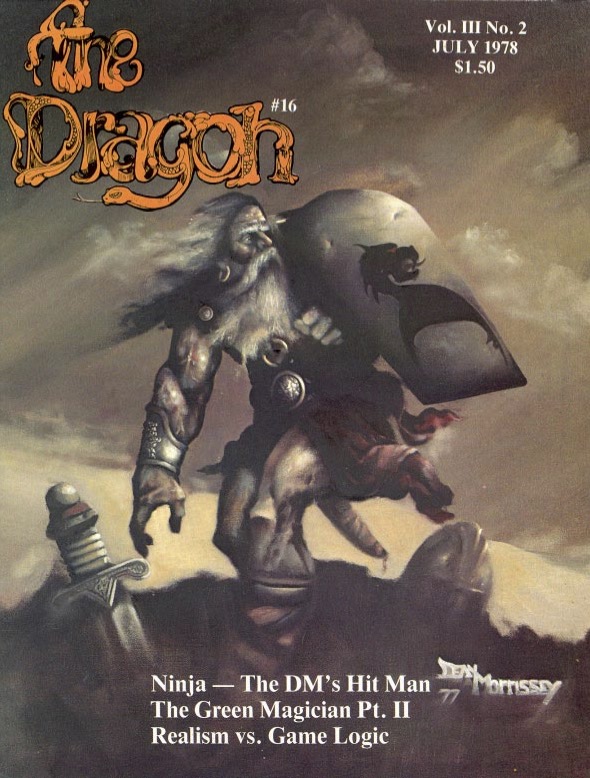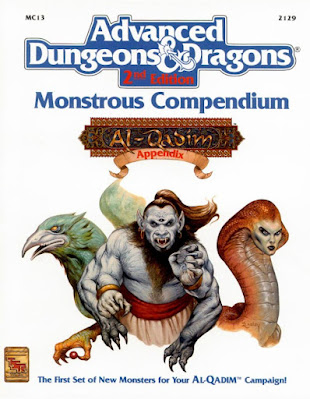Miskatonic Monday #99: Carnival of Madness
 The carnival is everything that society is not—exciting and exhilarating, romantic and raucous, uncertain and unsettled, even freakish and fearful. It seems appropriate that the modern idea of the carnival—at least the travelling carnival—would be propelled out of the 1893 World’s Columbian Exposition with its rides, games of chance, freak shows, and burlesque, let alone the horrors it would hide. From Ray Bradbury’s Something Wicked this Way Comes to the television series Carnivàle, the carnival and its workers, the often-mistrusted Carnies, have always been something to fear, the apprehension of the unknown tipping over into abhorrence as this classic slice of Americana slipped into our consciousness, set up its booths and displays, switched on the bright lights and jaunty pipes, barked out its delights, promised gaiety and fun, before switching off the lights and slipping away in the morning, leaving behind just memories and the promise of a return the next year. Almost from the start, the carnival became a vehicle behind which the horrors of the Mythos could wend their way across America, their impact barely felt from one town to the next, including in Call of Cthulhu with David A. Hargrave’s scenario ‘Dark Carnival’ from Curse of the Chthonians: Four Odysseys Into Deadly Intrigue. However, that was all setting with neither narrative nor background; the setting populated by a gallery of grotesques devoted to an unexplained cult – the Society of the Great Dark – and sitting over what is essentially a dungeon. Fortunately, the newest scenario for Call of Cthulhu, Seventh Edition to offer a carnival of consternation is far more chilling and much more cunning. Welcome to Carnival Pandemonium.
The carnival is everything that society is not—exciting and exhilarating, romantic and raucous, uncertain and unsettled, even freakish and fearful. It seems appropriate that the modern idea of the carnival—at least the travelling carnival—would be propelled out of the 1893 World’s Columbian Exposition with its rides, games of chance, freak shows, and burlesque, let alone the horrors it would hide. From Ray Bradbury’s Something Wicked this Way Comes to the television series Carnivàle, the carnival and its workers, the often-mistrusted Carnies, have always been something to fear, the apprehension of the unknown tipping over into abhorrence as this classic slice of Americana slipped into our consciousness, set up its booths and displays, switched on the bright lights and jaunty pipes, barked out its delights, promised gaiety and fun, before switching off the lights and slipping away in the morning, leaving behind just memories and the promise of a return the next year. Almost from the start, the carnival became a vehicle behind which the horrors of the Mythos could wend their way across America, their impact barely felt from one town to the next, including in Call of Cthulhu with David A. Hargrave’s scenario ‘Dark Carnival’ from Curse of the Chthonians: Four Odysseys Into Deadly Intrigue. However, that was all setting with neither narrative nor background; the setting populated by a gallery of grotesques devoted to an unexplained cult – the Society of the Great Dark – and sitting over what is essentially a dungeon. Fortunately, the newest scenario for Call of Cthulhu, Seventh Edition to offer a carnival of consternation is far more chilling and much more cunning. Welcome to Carnival Pandemonium.Carnival of Madness: A Call of Cthulhu Scenario for the 1970s is from the same team behind Highway of Blood and The Pipeline. It is inspired by the low-budget horror, splatter, and exploitation films of the period, shown in a ‘grindhouse’ or ‘action house’ cinema, such as Duel, I Spit on Your Grave, Last House on the Left, Texas Chainsaw Massacre, The Hills Have Eyes, and the more recent Death Proof. Carnival of Madness is a one-session, one-shot which takes place on the Friday the day before Halloween in 1970 just off the Aylesbury Pike in western Massachusetts. The Player Characters—who may or not be investigators—are visiting a carnival which has set up there, whether for fun, looking for Alice, a little girl who has been abducted from Worcester State Hospital (she will come to play a significant role in the scenario whatever the Player Characters’ motivations), or to investigate a curious cluster of similar dreams in the area. This is as either a quartet of ‘Meddling Kids’ in the mode of Scooby Doo—though minus the Great Dane, a team of Mythos dream investigators, a pair of Massachusetts State Police detectives, or a team of Private Investigators. Of these, Carnival of Madness includes pre-generated Investigators for the Meddling Kids and the two Detectives.
Carnival of Madness opens with the Investigators on the road and directed onto the grounds of the Carnival Pandemonium to the sound of jaunty party pipes [https://youtu.be/pct1uEhAqBQ] and encouraged to play games such as Whack-A-Monkey, Ring Toss, Duck Pond, Wheel-O-Fortune, and more. They are pushed, even pulled towards various booths and other events, including a series of performances announced by a classic carnival barker, as well as a Fortune Teller and the Asylum, the carnival’s Funhouse and Freak Show. The Freak Show contains the most obvious and most immediate evidence of the presence of the Mythos at the carnival and despite being a cliché, is appropriate. Yet there are oddities amongst the Carnies too, some of which are obvious and perhaps easily passed off, but if the Investigators look close enough (or is that too close?) many have something disturbing about them... The Asylum is subtler in its horror, being based on the classic facility for the mentally disturbed which constantly seems to play with the Investigators’ sense of perspective and that runs throughout Carnival of Madness.
Carnival of Madness is also a timed event and as the Investigators spend more time on the carnival grounds, reality seems to slip in and out around them, and they seem to slip in and out of reality. In actuality, they are descending deeper and deeper into Pandemonium, a space which distorts the world around them. What is pulling them is a vector, an Unreality, an infection which is making them more susceptible to the effects of the Pandemonium. At first there are only minor differences—colours not as bright, flavours blander, and sounds flatter, whilst those around the Investigators who are already one of the Infected, will seem to act strangely and see madness in everyone but themselves, but further and further in, the world will wear out, the people will disappear and reappear, the sun will take on a golden corona, chaos reigns as thoughts and emotions run rampant and have a physical presence, until the point where they are no longer at the carnival, or even on Earth. In and out of this slips Alice, sometimes taking an Investigator by the hand, sometimes stepping out of sight… The Investigators’ descent into Pandemonium is measured by Sanity loss and requires some extra tracking upon the part of the Keeper, the effects of any occurrence of any Bout of Insanity being marked by a drop further on that descent and a roll on the provided Unreality Tables.
For the players and their Investigators, Carnival of Madness comes with some excellent handouts, including tickets, photographs and images, posters, and maps, one of which delightfully hints at the Mythos entity at the heart of the scenario. The standout handout is the leaflet for the Carnival Pandemonium itself, which definitely needs to be printed out and handed to the players as it adds so much verisimilitude to the scenario. Six Investigator sheets—though only the front of the sheets—are given for the four Meddling Kids and the two Detectives.
For the Keeper there is the complete background to the scenario and the antagonists’ plans which come to fruition at the climax of the scenario, an explanation for Pandemonium is and how it works, a complete description of all the booths and events at the carnival—including all of the games, so the Investigators can get involved, stats for the major NPCs, descriptions of three Mythos artifacts, spells, and tomes, and a new Mythos creature. There is also advice and a warning or two—all of which are needed. Carnival of Madness is upfront about the fact that it involves body horror, graphic violence, drug use, adult language, gaslighting, and mental health issues—the gaslighting in particular. Across the course of the evening on which the scenario takes place, the Keeper is constantly presenting the players and their Investigators with seemingly false narratives and manipulating and misleading their perceptions. The scenario advises that the Keeper should be upfront with her players as well.
Carnival of Madness is a busy scenario, perhaps too busy to run in a single session and the Keeper will need to maintain a tight rein on the pace of the scenario as it builds to the climax. There is the suggestion that it could be run in two or three sessions, though that may lessen some of the scenario’s impact, for this is a scenario which is designed to build and build in intensity and some of that may be lost between sessions. The scenario is flexible enough that it could easily be set at any time from the Purple Decade of Cthulhu by Gaslight to nineteen eighties without any real changes.
Physically, Carnival of Madness is a fantastic looking book. The artwork is good, the writing decent, and the handouts excellent. Perhaps an index or a cheat sheet of tables to cover the rules additions would have been useful, but the book is relatively short.
Carnival of Madness is a scenario whose fantastic atmosphere and creepiness and weirdness grows and grows in intensity as the Investigators descend into Pandemonium and madness. It not only brings the raucous and rowdy nature of a carnival to life with all of the games and performances and booths, but infuses them with an unmellow yellow that will play and play again with the Investigators’ perceptions like a carousel of consternation.



 What’s new?
What’s new?
















